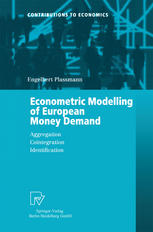

Most ebook files are in PDF format, so you can easily read them using various software such as Foxit Reader or directly on the Google Chrome browser.
Some ebook files are released by publishers in other formats such as .awz, .mobi, .epub, .fb2, etc. You may need to install specific software to read these formats on mobile/PC, such as Calibre.
Please read the tutorial at this link: https://ebookbell.com/faq
We offer FREE conversion to the popular formats you request; however, this may take some time. Therefore, right after payment, please email us, and we will try to provide the service as quickly as possible.
For some exceptional file formats or broken links (if any), please refrain from opening any disputes. Instead, email us first, and we will try to assist within a maximum of 6 hours.
EbookBell Team

5.0
40 reviewsThe introduction of a single European currency constitutes a remarkable instance of internationalization of monetary policy. Whether a concomitant internationalization can be detected also in the econometric foundations of monetary policy is the topic dealt with in this book. The basic theoretical ingredients comprise a data-driven approach to econometric modelling and a generalized approach to cross-sectional aggregation. The empirical result is a data-consistent structural money demand function isolated within a properly identified, dynamic macroeconomic system for Europe. The book itself evolved from a research project within the former Son derforschungsbereich SFB 178 "Internationalization of the Economy" at the University of Konstanz. Its finalization entails a due amount of gratitude to be extended into several directions: I am personally indebted, first of all, to my academic supervisor, Professor Dr. Nikolaus Laufer, for originally inspiring this work and for meticulously perusing its eventual result. Professor Dr. Win fried Pohlmeier, as a second supervisor, provided valuable confidence bounds around an earlier draft. The comments of both supervisors contributed substantially to the present shape of the book. I am institutionally indebted to the University of Konstanz, notably its Faculty of Economics and Statistics, for continuous provision of an excellent research environment, and to the Deutsche Forschungsgemeinschaft in Bonn for generous sponsorship of the former SFB, whose financial support dur ing that period is gratefully acknowledged. I am also indebted to Dresdner Bank AG Frankfurt, Risk Methodology Trading, for benign tolerance of all distractions associated with the preparation of the final manuscript.